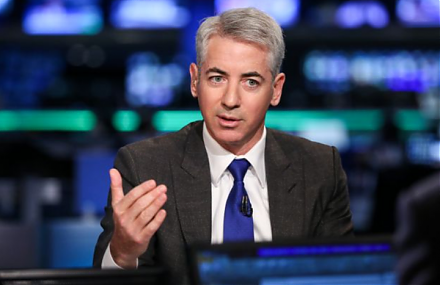

2023-06-07 10:27:00 Wed ET
stock market competition macrofinance stock return s&p 500 financial crisis financial deregulation bank oligarchy systemic risk asset market stabilization asset price fluctuations regulation capital financial stability dodd-frank
Anat Admati and Martin Hellwig (2014)
Bankers wear new clothes: what is wrong with banking and what to do about it
Anat Admati and Martin Hellwig analyze broad critical questions about bank capital regulation and asset market stabilization. The key problems of maintaining a stable financial system depend on inexorable information asymmetries and incentives in financial intermediation. In principle, several financial regulatory reforms worldwide such as annual macro stress tests and bank capital requirements become effective only when most market participants understand the theoretic foundations of these reforms. Admati and Hellwig present their thesis as a core contribution toward this goal. Their recent proposal provides the essential case for requiring banks to boost substantially higher common equity capital buffers in order to safeguard against extreme losses that might arise in rare times of severe financial stress. These rare times include the Global Financial Crisis 2008-2009 and the recent rampant corona virus crisis of 2010-2011.
Banks are vital financial institutions that help channel millions of retail deposits into credit for economic capital investments. This power over capital investments often entails sporadic temptations for banks to abuse depositor trust. Small-to-medium businesses and other borrowers who rely on bank credit implicitly depend on banks to maintain pervasive depositor trust. Thus, there is an essential role for the public regulation of banks. In this positive light, financial regulators and supervisors often need to maintain stable trust in the various channels of bank credit that are vital to our modern capitalist society.
For better asset market stabilization, the recent policy proposal requires banks to hold substantially greater equity capital buffers in order to absorb extreme losses that might arise in rare times of severe financial stress. Bank equity represents the amount of cash capital that bank owners invest in the bank. This equity capital also adds up all the values of bank assets and investments, minus all the values of debt liabilities that the bank owes to its depositors and other creditors. Net equity capital represents the core equity value that belongs to the bank owners (or shareholders). Admati and Hellwig introduce these ideas with a practical story about Kate who is trying to buy a house, partly with her own money and partly with mortgage finance. If Kate can put more of her own capital into the purchase price, then the mortgage lender would bear less mortgage default risk when the house value declines below the dollar amount of mortgage debt. In this case, the mortgage lender would lend to Kate at a lower interest rate with more favorable loan terms and conditions. From a fundamental perspective, Kate can feel well that contributing more equity capital makes her house investment less expensive.
However, if Aunt Claire offers to sign a mortgage loan guarantee for Kate, she can get a lower interest rate on the mortgage loan with no reference to the debt dollar amount. In this alternative scenario, Kate would begin to view equity capital as an expensive way to buy her house. She would have an incentive to borrow as much as she can, and then she can invest her residual capital elsewhere. This key story demonstrates the basic logic of common equity capital regulation for banks: Kate becomes the bank owner, and Aunt Claire becomes the taxpayer. In sum, Admati and Hellwig argue that most banks hold common equity capital at least 25% worth of their total assets in most decades before the new millennium. For some reason, however, the average ratio of common equity capital values to total assets seems to have declined to only 5% in recent years. This status quo may or may not prove to be sustainable in the long run. Rare disaster risk often turns out to be the worst-case scenario in the longer-run severe downturn in global economic history. Asset market stabilization remains an important public policy goal for financial regulators and supervisors worldwide.
For any given level of risk in bank investments, the probability of investment losses becomes smaller when the bank retains more common equity capital. More equity also means that the bank owners have a greater incentive to avoid risks of extreme losses. In accordance with asset market stabilization, common equity helps solve moral hazard in financial intermediation.
The waves of bank runs that brought on the Great Depression of the 1930s led to the creation of government deposit insurance programs in America and elsewhere. Deposit insurance effectively responded to the possibility that widespread fears of bank failures could create a self-fulfilling prophecy. Many depositors would run to withdraw their deposits before the bank failed due to its inability to quickly liquidate all its bank capital investments. With deposit insurance, however, depositors would be less pessimistic about how much common equity their bank had in total assets and capital investments, so banks could borrow at low interest rates even with less common equity. When bank creditors could receive deposit insurance in the event of bank failure, bank default risk would become a public problem. In this scenario, the requirement that banks should have sufficient common equity capital would be the responsibility of financial regulators.
Admati and Hellwig draw an analogy from the tale by Hans Christian Andersen of an emperor whose lack of clothes shows both tyranny and ignorance. When many depositors bear the inadvertent risks of bank failure, people can see clearly enough that they should not deposit funds in the bank with too little common equity capital. When the government shoulders the responsibility for depositor insulation against bank failures, common equity capital requirements become a technical regulatory subject that only high-skill experts can understand.
In most regulatory debates, persuasive voices suggest that common equity is quite expensive for banks. Requiring higher common equity capital would increase bank costs of loans to cause a large decline in economic growth and capital investment. In accordance with this logic, bank equity capital requirements have declined much in recent decades in the run-up to the Global Financial Crisis of 2008-2009. Many mega banks in America, Britain, and Europe can finance their assets with only 3% to 5% common equity capital. When extreme losses put this thin layer of equity at risk, the result turns out to be a severe global financial meltdown.
Nobel Laureates Franco Modigliani and Merton Miller (1958) show that the sum of the total value of corporate equity (to owners or shareholders) plus the total value of debt (to creditors) must be equal to the total value of assets with consistent cash flows. In this fundamental view, the cost of debt or equity issuance should not rely on how much debt or equity is available for the bank to finance capital investments. From this neoclassic perspective, changes in common equity capital requirements should not affect the total cost of bank loans at all.
Good economic theorists can find many exceptions to the heuristic rule of thumb by Modigliani and Miller (1958). From time to time, another party or the government bears the difference in costs. In an alternative view, the cost of funding investments can sometimes depend on the relative mix of debt and equity.
When the government implicitly or explicitly helps insure bank creditors, increases in the fraction of debt can increase the value of this insurance from the government. In this case, increasing debt may make the bank owners better off at no cost to the creditors. However, the bank gains this insurance to the detriment of the taxpayers. In the absence of a greater interest premium, the taxpayers bear risks that private investors would not accept. If stringent common equity capital requirements would prevent the bank from making some capital investments, these investments would only be the projects that private investors would have refused without government insurance subsidization.
Equity capital requirements may appear expensive to the bank only because public insurance allows many people to borrow at low interest rates. These low interest rates cannot properly respond to the greater risks that the bank creditors must bear when the bank has less equity capital. When push comes to shove, the basic law of inadvertent consequences counsels caution.
Taxes can sometimes serve as one other key reason why the profitability of capital investments can depend on the relative mix of debt and equity capital requirements. In most countries, tax laws treat interest payments to creditors more favorably than dividend payments to shareholders. With reference to the tax deductibility of most interest payments, Admati and Hellwig urge fiscal macro reforms of tax regulations that often subsidize debt over equity by treating interest payments more favorably than dividend payments. These tax code provisions may inadvertently increase the macro fragility of the financial system by encouraging most banks and corporations to use more debt instead of equity in funding capital investment projects.
When cash equity capital buffers are small, the higher likelihood of default causes distortions in bank investment decisions. When the bank evaluates a potential new investment project, the bank owners would put no value on any prospective returns from the investment that would accrue after the rare event of bank failure, as any returns would only benefit the bank creditors. Hence, the high likelihood of default can reduce the bank tendency to make productive capital investments from internal net income. Conversely, the bank may inadvertently take greater risks with higher amounts of debt capital. In the bank-specific context, insufficient common equity distorts the incentives that encourage the bank owners to better manage risks. In practice, deposit insurance can exacerbate the problem by making the cost of new bank loans insensitive to prospective returns in the rare event of loan default. Over the long run, the bank attracts more deposits by increasing common equity capital buffers to enhance the best likelihood of success. For long-term sustainability, the bank therefore needs financial capital regulation and supervision.
As legal tender and fiat money, cash is the most liquid store of value and medium of exchange. The bank can immediately use cash capital to meet short-run as well long-term debt obligations. As the lender of last resort, the central bank should be able to buy up the fire-sale assets to expect some positive long-run returns on the contingent provision of short-term liquidity to the bank in financial distress. Overall, the central bank should be able to solve the liquidity problem for most banks only when these banks remain solvent. Here bank solvency means that the bank retains the positive equity capital valuation. From this fundamental viewpoint, bank capital regulation is essential to short-term liquidity maintenance. Further, the central bank uses annual macro stress tests to assess bank solvency on a regular basis. Under the Basel bank capital framework, all banks should hold substantially higher equity capital requirements that would be commensurate with specific exposure to market risk, credit risk, operational risk, and procyclicality risk etc.
The main question of bank capital regulation relates to how we define the common equity capital requirements. These equity capital buffers help the bank safeguard against extreme losses that might arise in rare times of severe financial stress such as the Global Financial Crisis of 2008-2009 as well as the recent rampant corona virus crisis of 2010-2011. In the financial report of any corporation, all of the assets list on the left-hand side of the balance sheet, and all the liabilities list on the right-hand side of the balance sheet. We can estimate the book value of common equity capital as the difference between total assets and total liabilities. This book value of common equity capital represents the residual owner claim or the last liability on the right-hand side of the balance sheet. This book value of common equity capital is usually positive so that the balance sheet balances in the accounting profession. For any public corporation, the stock market provides a mark-to-market fair-value estimate of common equity capital. This market equity value is equal to the current stock price per share times the total number of shares in circulation. With the core passions of a dynamic stock market, we cannot judge that the market equity value is necessarily more or less accurate than the book value of common equity capital. Most financial economists can suggest that a relatively low common equity capital value of either should be a cause for concern by bank regulators. In recent times, both the market and book values of common equity capital for many banks seem to hover around 3% to 5%. In light of this evidence, some financial regulators and supervisors advocate that banks must substantially increase their common equity capital requirements in order to safeguard against extreme losses that might arise in rare times of severe financial stress. Monte Carlo simulation offers some recent evidence in support of 13% to 26% equity capital ratios on the basis of conditional value-at-risk capital regulation. From the Modigliani-Miller irrelevance proposition, we can infer that the total cost of bank credit should be relatively insensitive to the fraction of common equity capital within some broader range where the chance of bankruptcy is small. Effective bank capital regulation stipulates that a brighter line must be drawn somewhere. Unlike non-financial public corporations, banks should further need effective common equity capital regulation as these banks issue retail deposits as debt liabilities on the right-hand side of the balance sheet. In this light, financial regulators often learn to assess how banks apply internal risk models for common equity capital requirements and other loan credit interest rate applications over time. Under the Basel bank capital framework, this assessment can help align the bank-specific risk model applications and common equity capital requirements with the basic incentives for better long-term financial risk management.
Bank capital regulators and supervisors communicate to depositors and taxpayers that their retail deposits are safe. This communication requires regular on-site bank examinations and assessments of internal risk models that banks apply to ensure total capital adequacy over time. If some abstruse or esoteric financial transactions generate off-balance-sheet risks in standard public accounting statements, several bank capital regulators and supervisors often need to delve into these transactions for banks that run the core business of issuing reliably safe deposits. The baseline reason for requiring some minimal fraction of equity in bank assets is that financial regulators help ensure substantial incentives for banks to invest their equity capital in a prudent manner.
As of December 2011, for instance, JPMorgan Chase Bank had to adopt the new International Financial Reporting Standards (IFRS). Under the baseline IFRS rules, the bank would have to report $1.79 trillion more assets and liabilities from swaps and other derivative trades, in addition to the net equity capital value of $184 billion. This discrepancy was almost 10 times larger than the total equity capital value of the bank. Under the prior GAAP financial standards, JPMorgan Chase Bank could claim that its equity capital value was more than 8% of total assets. Under the new IFRS standards, this fraction would shrink to 3%-4.5%. Recent simulation evidence would further support the main thesis that most banks would need to substantially increase their cash equity capital conservation. The resultant cash capital buffers would help most banks safeguard against extreme losses that might arise in rare times of severe financial stress. These rare times of financial stress might include the Great Depression of the 1930s, the Global Financial Crisis of 2008-2009, and the recent rampant pandemic corona virus crisis of 2020-2021.
Recent rules that allow banks to apply internal risk models to determine common equity capital requirements add another layer of complexity to the public validation of regulatory decisions. In the broader Basel bank capital context, these rules can effectively reward banks for applying internal risk models to better optimize the key trade-off between risk and return. Some senior bank managers may inadvertently blind themselves to some risks off the balance sheet. In the search for a statistical benchmark for the internal capital adequacy assessment process (ICAAP), it may be helpful for financial regulators to consider data about the size of extreme losses from bank failures as some fraction of their retail deposit liabilities. Prescient and effective supervisory review therefore becomes essential in this context.
Admati and Hellwig argue persuasively for requiring banks to hold at least 20% to 30% common equity capital as part of total assets. Within this relatively wide range, the Modigliani-Miller irrelevance proposition helps affirm that marginal changes in the fraction of common equity capital cannot significantly boost costs of bank credit. The Admati-Hellwig bank capital policy prescription shines fresh light on the 20%-30% reasonable range in accordance with recent Monte Carlo simulation evidence, whereas, the current international regulatory standards may be substantially below this reasonable range.
In a new dynamic stochastic general equilibrium (DSGE) structural model of bank common equity capital, the bank adjusts its common equity capital ratio toward the minimum solvency threshold for self-closure, the interior steady-state capital ratio, or the zero-leverage threshold. This dynamic equilibrium model nests the trade-off and market-timing theories of capital structure as special cases in the comparative statics. There is an inevitable trade-off between foregone tax shields and corporate cash distributions, and the bank has to raise common equity capital when the real interest rate or the cost of capital is low. In the broader context of dynamic interplay between bank capital and deposit insurance, the social value of deposit insurance negatively correlates with the common equity bank capital ratio. In effect, this new model connects deposit insurance to more holistic bank capital regulation.
The regulatory agency can provide permanent bank-specific tax subsidization for the bank to increase its equity capital ratio for better financial flexibility and broader asset market stabilization. This permanent tax subsidy serves as an incentive for the bank to be more financially viable due to its greater intertemporal debt capacity in an economic boom. Size, value, and momentum excess returns persist as a key natural result in the cross-section of asset returns.
The permanent increase in total common equity capital adequacy for most banks can be conducive to promoting a more robust financial system with lower systemic risk exposure and asset return volatility. The regulatory agency can further expand bank-specific intertemporal debt capacity by imposing interim restrictions on cash dividend payout and share buyback. These supervisory payout restrictions can be especially important during a major financial downturn when the marginal utility of bank equity capital usage is high. This feasible alternative policy instrument helps alleviate the systemic risk concern that has arisen from the Global Financial Crisis of 2008-2009.
The bank-specific intertemporal trade-off between foregone tax shields and future cash distributions determines the optimal common equity capital ratio throughout the dynamic equilibrium lifecycle. The regulatory agency can help induce the bank to strengthen its internal common equity capital position by introducing permanent bank-specific tax subsidies in an economic boom or bank cash payout restrictions in a recession. In this theoretic context, the permanent capital hypothesis suggests bank-specific tax subsidization and cash payout prevention as feasible asymmetric policy options for deleveraging the financial system. The resultant increase in bank equity capital serves as the countercyclical buffer that safeguards against extreme losses that might arises in rare times of severe financial stress.
This analytic essay cannot constitute any form of financial advice, analyst opinion, recommendation, or endorsement. We refrain from engaging in financial advisory services, and we seek to offer our analytic insights into the latest economic trends, stock market topics, investment memes, personal finance tools, and other self-help inspirations. Our proprietary alpha investment algorithmic system helps enrich our AYA fintech network platform as a new social community for stock market investors: https://ayafintech.network.
We share and circulate these informative posts and essays with hyperlinks through our blogs, podcasts, emails, social media channels, and patent specifications. Our goal is to help promote better financial literacy, inclusion, and freedom of the global general public. While we make a conscious effort to optimize our global reach, this optimization retains our current focus on the American stock market.
This free ebook, AYA Analytica, shares new economic insights, investment memes, and stock portfolio strategies through both blog posts and patent specifications on our AYA fintech network platform. AYA fintech network platform is every investor's social toolkit for profitable investment management. We can help empower stock market investors through technology, education, and social integration.
We hope you enjoy the substantive content of this essay! AYA!
Andy Yeh
Chief Financial Architect (CFA) and Financial Risk Manager (FRM)
Brass Ring International Density Enterprise (BRIDE) ©
Do you find it difficult to beat the long-term average 11% stock market return?
It took us 20+ years to design a new profitable algorithmic asset investment model and its attendant proprietary software technology with fintech patent protection in 2+ years. AYA fintech network platform serves as everyone's first aid for his or her personal stock investment portfolio. Our proprietary software technology allows each investor to leverage fintech intelligence and information without exorbitant time commitment. Our dynamic conditional alpha analysis boosts the typical win rate from 70% to 90%+.
Our new alpha model empowers members to be a wiser stock market investor with profitable alpha signals! The proprietary quantitative analysis applies the collective wisdom of Warren Buffett, George Soros, Carl Icahn, Mark Cuban, Tony Robbins, and Nobel Laureates in finance such as Robert Engle, Eugene Fama, Lars Hansen, Robert Lucas, Robert Merton, Edward Prescott, Thomas Sargent, William Sharpe, Robert Shiller, and Christopher Sims.
Follow our Brass Ring Facebook to learn more about the latest financial news and fantastic stock investment ideas: http://www.facebook.com/brassring2013.
Follow AYA Analytica financial health memo (FHM) podcast channel on YouTube: https://www.youtube.com/channel/UCvntmnacYyCmVyQ-c_qjyyQ
Free signup for stock signals: https://ayafintech.network
Mission on profitable signals: https://ayafintech.network/mission.php
Model technical descriptions: https://ayafintech.network/model.php
Blog on stock alpha signals: https://ayafintech.network/blog.php
Freemium base pricing plans: https://ayafintech.network/freemium.php
Signup for periodic updates: https://ayafintech.network/signup.php
Login for freemium benefits: https://ayafintech.network/login.php
If any of our AYA Analytica financial health memos (FHM), blog posts, ebooks, newsletters, and notifications etc, or any other form of online content curation, involves potential copyright concerns, please feel free to contact us at service@ayafintech.network so that we can remove relevant content in response to any such request within a reasonable time frame.
2019-07-27 17:37:00 Saturday ET

Capital gravitates toward key profitable mutual funds until the marginal asset return equilibrates near the core stock market benchmark. As Stanford finance
2017-12-13 06:39:00 Wednesday ET

The Federal Communications Commission (FCC) has decided its majority vote to dismantle rules and regulations of most Internet service providers (ISPs) that
2018-07-01 08:34:00 Sunday ET

Are China and Russia etc gonna dethrone the petrodollar? Over the years, China, Russia, France, Germany, and Japan have made numerous attempts to use their
2019-04-23 19:45:00 Tuesday ET

Income and wealth concentration follows the ebbs and flows of the business cycle in America. Economic inequality not only grows among people, but it also gr
2017-02-01 14:41:00 Wednesday ET

President Trump refreshes his public image through his presidential address to Congress with numerous ambitious economic policies in order to make America g
2018-03-05 07:34:00 Monday ET

Peter Thiel shares his money views of President Trump, Facebook, Bitcoin, global finance, and trade etc. As an early technology adopter, Thiel invests in Fa